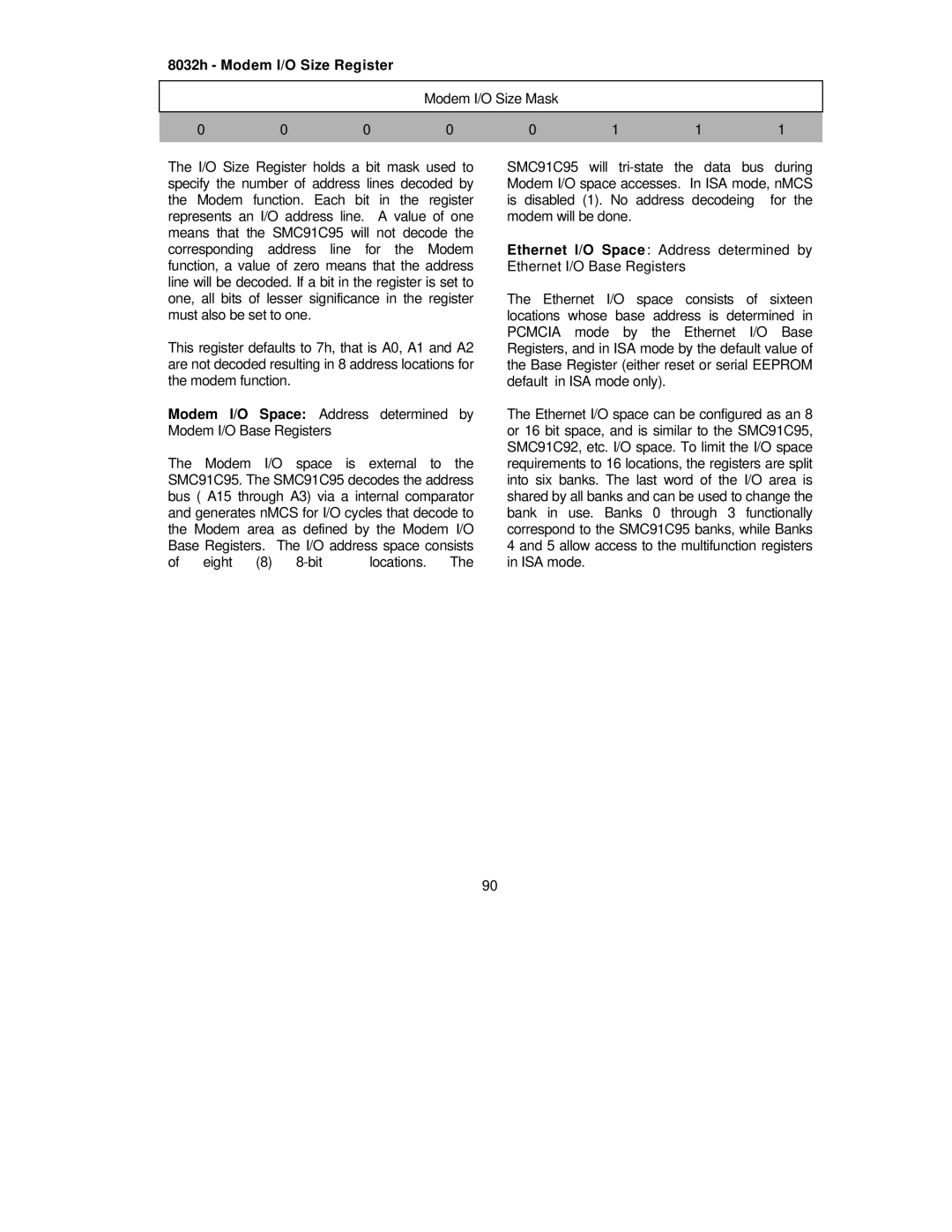8032h - Modem I/O Size Register
Modem I/O Size Mask
0 | 0 | 0 | 0 | 0 | 1 | 1 | 1 |
|
|
|
|
|
|
|
|
The I/O Size Register holds a bit mask used to specify the number of address lines decoded by the Modem function. Each bit in the register represents an I/O address line. A value of one means that the SMC91C95 will not decode the corresponding address line for the Modem function, a value of zero means that the address line will be decoded. If a bit in the register is set to one, all bits of lesser significance in the register must also be set to one.
This register defaults to 7h, that is A0, A1 and A2 are not decoded resulting in 8 address locations for the modem function.
Modem I/O Space: Address determined by Modem I/O Base Registers
The Modem I/O space is external to the SMC91C95. The SMC91C95 decodes the address bus ( A15 through A3) via a internal comparator and generates nMCS for I/O cycles that decode to the Modem area as defined by the Modem I/O Base Registers. The I/O address space consists
of eight (8) | locations. The |
SMC91C95 will
Ethernet I/O Space: Address determined by Ethernet I/O Base Registers
The Ethernet I/O space consists of sixteen locations whose base address is determined in PCMCIA mode by the Ethernet I/O Base Registers, and in ISA mode by the default value of the Base Register (either reset or serial EEPROM default in ISA mode only).
The Ethernet I/O space can be configured as an 8 or 16 bit space, and is similar to the SMC91C95, SMC91C92, etc. I/O space. To limit the I/O space requirements to 16 locations, the registers are split into six banks. The last word of the I/O area is shared by all banks and can be used to change the bank in use. Banks 0 through 3 functionally correspond to the SMC91C95 banks, while Banks 4 and 5 allow access to the multifunction registers in ISA mode.
90
